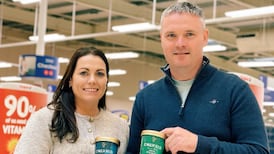Standing in the art-soaked splendor of a Milanese parlor as an array of A-list Italian business leaders listened intently, Howard D. Schultz, chairman and chief executive of Starbucks, recited a remarkable statistic on Friday: Each week, roughly 90 million people pass through a Starbucks somewhere on earth.
Equally remarkable, given that Starbucks operates in 70 countries, is this: Not one of those people is in Italy, a country where coffee culture is central to daily life, and that represents something of a coffee holy grail to Schultz.
Italy, land of the perfect espresso and the exquisitely frothy cappuccino, is a Starbucks-free nation. Or it was. Schultz swooped into Milan during Fashion Week to announce that Starbucks would open its first coffee shop in Italy early next year, in Milan.
Given that Starbucks is opening 500 stores a year in China, the Milan venture might seem like a nice little ornament. But for Schultz, coming to Italy is personal. It is also delicate - and a bit of a risk.
“There are very few markets and stores that I’m as intimately involved in as this,” he said in an interview after the announcement. He added, “We’re going to come here with great humility.”
Starbucks has always been careful in Europe, aware that the continent’s coffee aficionados have refined tastes and an abundance of good coffee shops - and might take offense at the idea that an American company is needed for a better espresso.
Yet Starbucks has marched successfully into Britain, France and Germany. Italy, though, is Italy. "I think young people will try it out, for curiosity," said Orlando Chiari, the 82-year-old owner of Camparino, a century-old coffee bar in central Milan, "but I doubt it will become a major player in Italy."
Word began to leak out in October that Starbucks was looking at Italy. The company will partner with Percassi, the Italian retail and real estate group, which will own and operate the stores as licensee. Schultz said the first store in Milan would open early next year, followed by others in the city before the company expands elsewhere in Italy.
The New York Times












